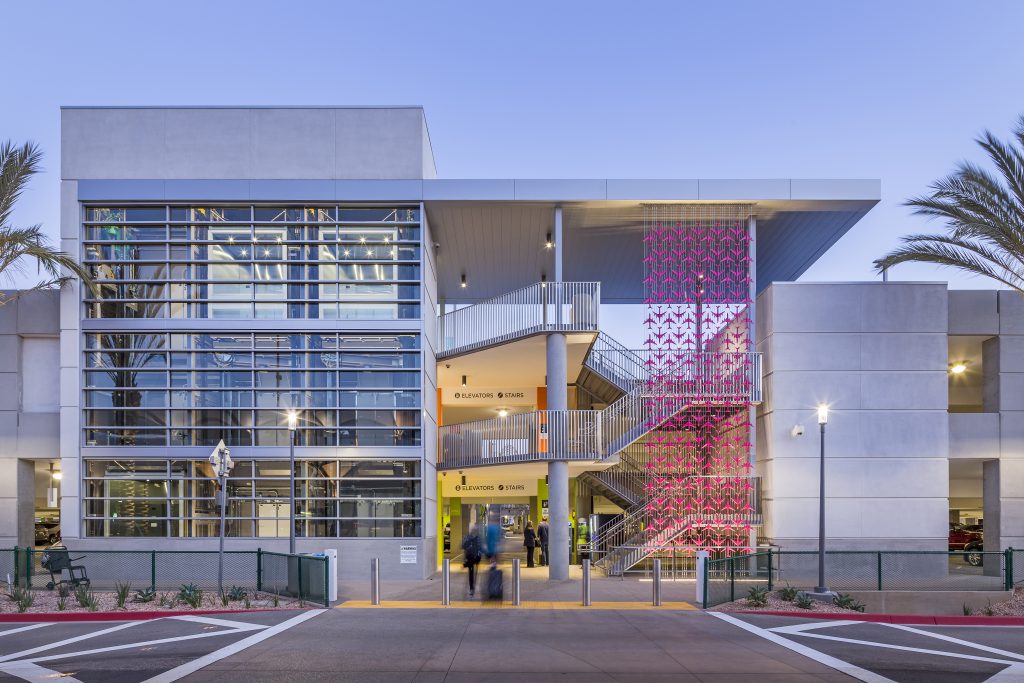Randy Vandewater explores the forces driving the need for parking structures to behave differently and provide a wider variety service
Parking structures in their current form will soon be a thing of the past. Environmental, social and technological advances have changed the way people think about mobility. These shifts have created an opportunity for those in the parking industry to provide solutions that will meet the changing demand.
The automotive industry is in the midst of a huge shift and the parking industry needs to evolve to meet changing consume needs. Parking structures cannot just be a place to park anymore. They need to be able to support and interact with the next generation of vehicles that will be connected to each other, to third party apps, smart cities and the energy grid.

Technology, climate, and regulation are all contributing to the changing vehicle landscape. Regulators worldwide are investing in infrastructure to support alternative fuel vehicles. Manufactures are heavily investing in battery electric vehicles (EVs) and plug-in hybrid vehicles (PHEV), and designers and city planners need to prepare for this future. EV sales are accelerating rapidly. Last year’s sales worldwide nearly doubled while the total number of EV’s on the road reached 16.5 million, three times the number on the road in 2018. This amazing rise in EV in adoption has also created the need for large amounts of smart charging. Future parking structures could become mobility hubs that are part of microgrids providing photovoltaic panels and battery storage to ease the strain on an ageing electrical infrastructure, as well as charging for first and last mile transportation like scooters and e-bikes.
Attitudes on the future of mobility have been evolving in recent years. Many thought leaders expect a shift by consumers away from private vehicles, thus eliminating the need for parking and parking structures. That shift is thought to be driven by the continued adoption of advanced drive assistance systems (ADAS) which allow the driver to completely disengage. The next advancement is fully automated vehicles that do not have a steering wheel. These innovations are expected to spur the move away from private vehicles to mobility fleets.
According to a study by Deloitte, individual ownership may experience a slight decrease over the next 15 years, but some of that demand will shift from personal ownership to mobility or corporate fleets, including leasing companies. Overall demand for automobiles and light commercial vehicles is still expected to modestly climb. If this shift in ownership occurs, fleet providers will still need place to park and charge vehicles when they are not in use. This provides opportunities for parking providers to have smart charging solutions as well as the ability to house and service these fleets of highly autonomous vehicles.

The pandemic may have also altered some attitudes on the future of mobility. A recent study by McKinsey& Company found that “reducing risk of infection is now the primary reason for the choice of a mode of transportation”. Prior to the pandemic risk of infection was seventh on the list. During the pandemic, people shifted away from public transportation and ride-sharing to personal vehicles. It’s unclear how long lasting that sentiment will be, but the need for parking is not going away soon. Another societal shift that occurred during the pandemic was the overnight introduction of work from home. While many companies would like to get their people back into the office, most employees would prefer a more flexible or hybrid model. As employers try to attract the best talent the partial return to the office appears to be something that will be here for the near future. This means the parking industry is going to have to be prepared for fluctuations in demand, while remaining profitable.
There are many forces driving the need for to parking structures to behave differently and provide a wider variety service than they do today. The leading examples of connected cites, smart vehicles, EV charging, strained electrical grids, climate change and even last mile delivery services are all opportunities to innovate and to provide long lasting solutions for a varied mobility landscape.
The opinions expressed here are those of the author and do not necessarily reflect the positions of Automotive World Ltd.
Randy Vandewater is Director of Perq, a Walker x Swinerton innovation
The Automotive World Comment column is open to automotive industry decision makers and influencers. If you would like to contribute a Comment article, please contact [email protected]
